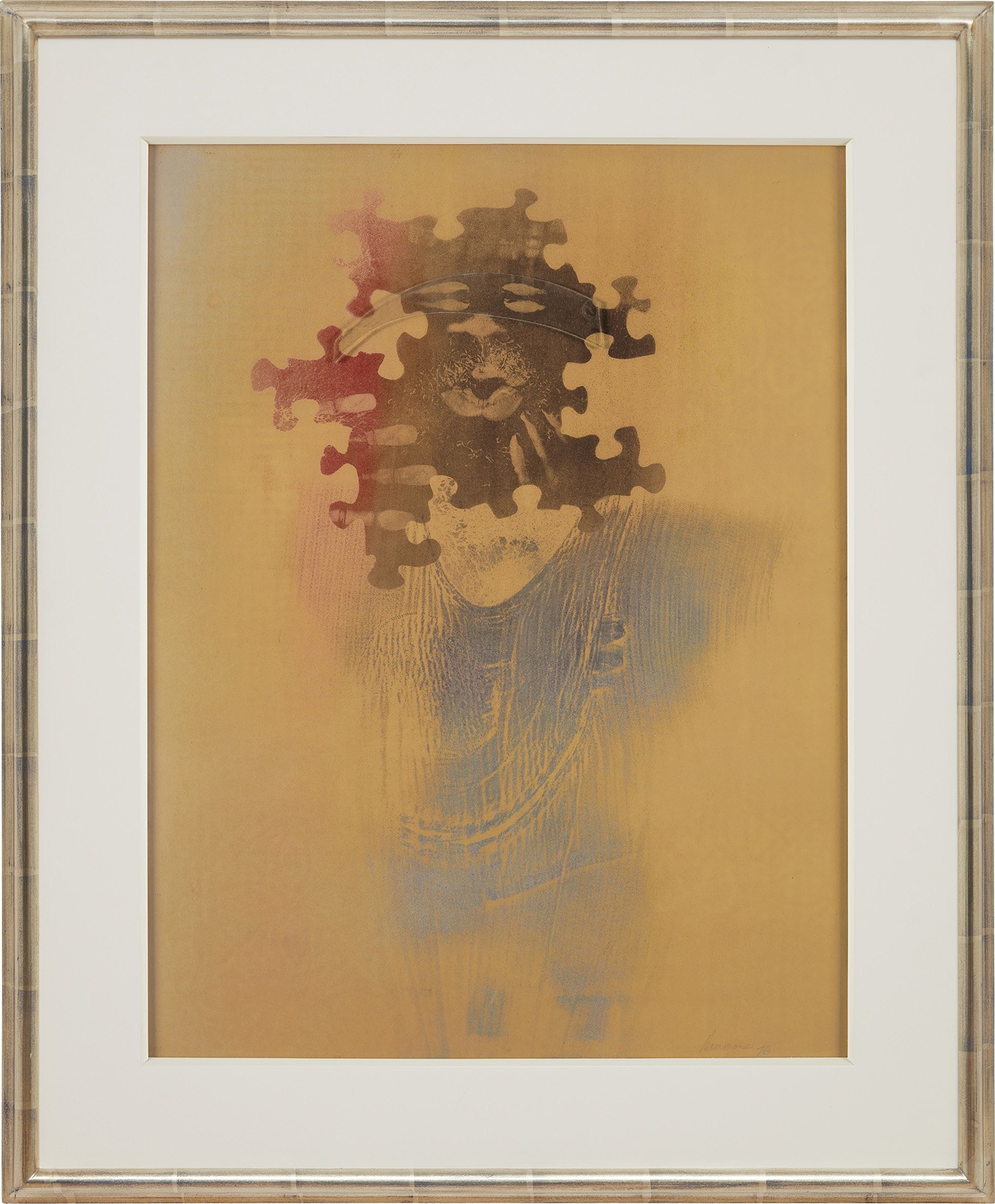



6
David Hammons
Puzzling Times
Further Details
Full-Cataloguing
David Hammons
American | 1943Few artists are afforded the liberty to dictate exhibition schedules and public appearances, but David Hammons eschews the spotlight and rebels against the conventions of the art world. Whether intentionally or not, Hammons creates works so laden with spell-binding metaphor that they have become symbols for movements both in the art world as well as in the public domain. (His now-iconic In the Hood sculpture has been used by Black Lives Matter activist group.)
Hammons doesn't work in mediums or any formal or academic theory—he famously has said, "I can't stand art actually." Still, with controversial works including his PETA-paint-splashed Fur Coat sculpture, Hammons remains one of contemporary art's most watched artists. Hammons also doesn't frequently exhibit, and his last major gallery show, 2016's "Five Decades," only featured 34 works. With a controlled market, Hammons saw Untitled, a basketball hoop with dangling candelabra, achieve $8 million at Phillips in 2013.